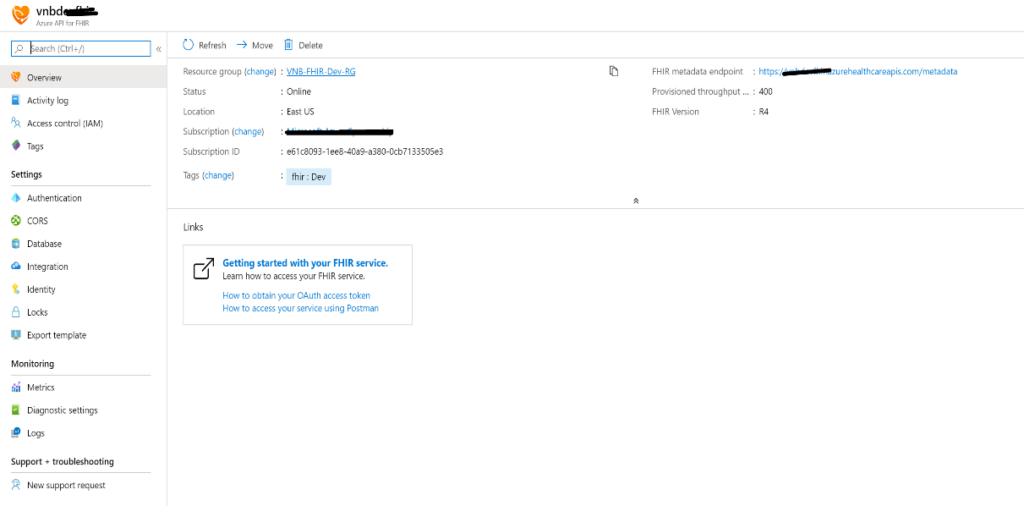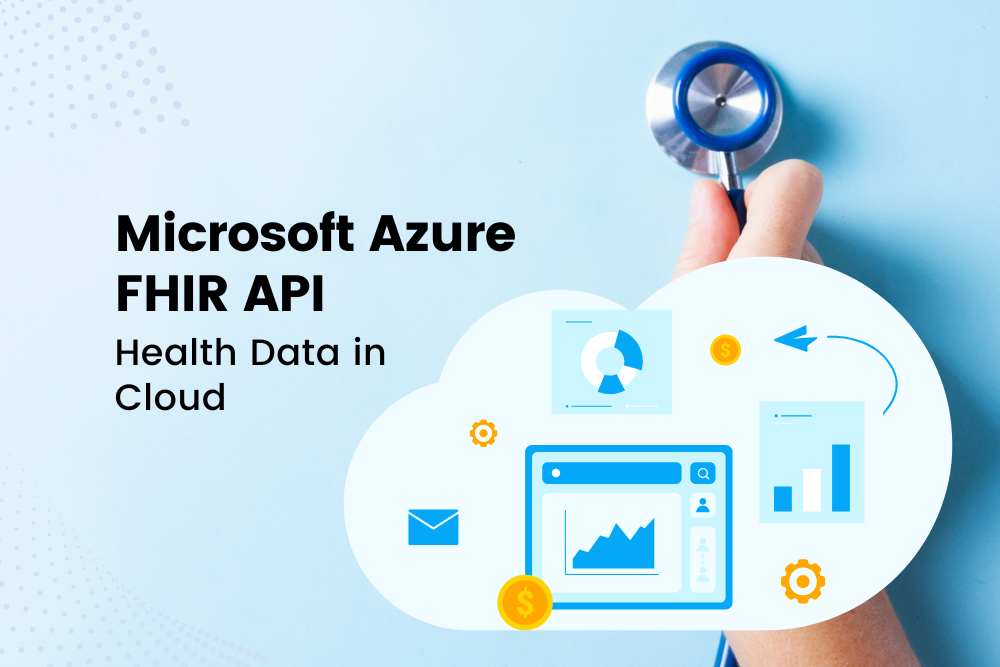What is Microsoft Azure FHIR API?
Microsoft’s Azure API for FHIR is an offering to connect existing data sources like electronic health record systems and research databases. This solution is a long standing need for a simplified data management with a single, consistent solution for protected health information (PHI) in the cloud. This is an onset for new opportunities with analytics, machine learning and actionable intelligence across an Healthcare enterprise’s health data.
Microsoft Azure FHIR API allows rapid exchange data in the HL7 FHIR standard format with a single, simplified data management solution for protected health information (PHI). It brings together health data from disparate systems using industry standard HL7 FHIR. This robust, extensible data model standardizes semantics and data exchange so all systems using FHIR can work together.

Microsoft Azure FHIR API helps relate points of data from across disparate systems to create richer datasets. Using these datasets we can enable advanced analytics scenarios that promote better health outcomes. Thereby we can connect people and health data in intelligent new ways across your infrastructure, productivity applications, business applications and analytics.
It allows to store your PHI data with confidence. Azure security isolates data and provides layered, in-depth defense and advanced threat protection that’s aligned to strict industry compliance standards. Azure covers more than 90 compliance certifications including ISO 27001 and meets HIPAA regulatory requirements.

The robust and extensible data model standardizes semantics and data exchange so all systems using FHIR can work together. Microsoft Azure FHIR API enables rapid exchange of data through Fast Healthcare Interoperability Resources (FHIR®) APIs, backed by a managed Platform-as-a Service (PaaS) offering in the cloud. It makes it easier for anyone working with health data to ingest, manage, and persist Protected Health Information PHI in the cloud.
Some of the detailed feature set of this service are as follows:
- Managed FHIR service, provisioned in the cloud in minutes
- Enterprise-grade, FHIR®-based endpoint in Azure for data access, and storage in FHIR® format
- High performance, low latency
- Secure management of Protected Health Data (PHI) in a compliant cloud environment
- SMART on FHIR for mobile and web implementations
- Control your own data at scale with Role-Based Access Control (RBAC)
- Audit log tracking for access, creation, modification, and reads within each data store
Overall, it allows one to create and deploy a FHIR service in just minutes to leverage the elastic scale of the cloud. We pay only for the throughput and storage we need. The Azure services that power the Azure FHIR API are designed for rapid performance no matter what size datasets you are managing.
Microsoft takes care of the ease of operations of a FHIR Server which takes on the operations, maintenance, updates, and compliance requirements in the PaaS offering. This is an enabler to free an enterprise’s own operational and development resources.
At VNB Health, we did a deep dive into Azure FHIR API. Below is the service blade in Azure in our dev environment.

Benefits and Highlights of Microsoft Azure FHIR API
Securely manage health data in the cloud
The Azure API for FHIR allows for the exchange of data via consistent, RESTful, FHIR APIs based on the HL7 FHIR specification. Backed by a managed PaaS offering in Azure, it also provides a scalable and secure environment for the management and storage of Protected Health Information (PHI) data in the native FHIR format.
Free up your resources to innovate
A health enterprise could invest resources building and running their own FHIR service. With the Azure API for FHIR, Microsoft takes on the workload of operations, maintenance, updates and compliance requirements. This allows you to free up your own operational and development resources.
Enable interoperability with FHIR
Using the Azure API for FHIR enables connect with any system that leverages FHIR APIs for read, write, search, and other functions. It can be used as a powerful tool to consolidate, normalize, and apply machine learning with clinical data from electronic health records, clinician and patient dashboards, remote monitoring programs, or with databases outside of an enterprise’s system that have FHIR APIs.
Control Data Access at Scale
Role-Based Access Control (RBAC) enables managing how the data is stored and accessed. Providing increased security and reducing administrative workload, we determine who has access to the datasets we create, based on role definitions we create for our environment.
Audit logs and tracking
Quickly track where the data is going with built-in audit logs. Track access, creation, modification, and reads within each data store.
Secure your data
We can now Protect PHI with unparalleled security intelligence. The data is isolated to a unique database per API instance and protected with multi-region failover. The Azure API for FHIR implements a layered, in-depth defense and advanced threat protection for the data.
*Image Credits and Reference: www.microsoft.com & www.hl7.org/fhir **Content Credits: DPS Bali


